The stellar wind is also called the Spanish flag or morning glory. The flower changes color beautifully and you can even overwinter the morning glory.

In addition to its blaze of colour, the stellar morning glory (Ipomoea lobata) also because of its climbing skills and is a coveted climbing plant for the balcony and garden. In the following you will learn what to look out for when planting and how to properly care for the morning glory.
contents
- Stellar winds: origin and characteristics
- Growing Morning Glory: location, sowing and procedure
- The right morning glory care
- increase stellar winds
- Is the stellate morning glory hardy?
- Is the stellar morning glory poisonous?
Stellar winds: origin and characteristics
The morning glory - also called Spanish flag - is a perennial from southern Mexico and belongs to the genus of morning glory (Ipomoea) within the morning glory family (Convolvulaceae
). The warmth-loving creeper is cultivated for several years in its homeland, but only as an annual in Germany because of its sensitivity to frost. With its twisting shoots, the morning glory can climb up other plants or trellises. The leaves are three-lobed and stalked. The flowers, which are arranged in groups in a coil, make the morning glory special. They open one after the other from bottom to top from July to September. Buds and young flowers are red, as the flower opens further, it turns orange. Even older and soon wilting flowers are yellowish and creamy white. This creates a striking play of colors that gave the Spanish flag its name. It is also known as an Indian feather or in English as Morning Glory, because the colors are reminiscent of a sunrise. The morning glory is usually between 3 and 5 meters tall and is suitable as a privacy screen or for greening trellises.
Tip: If you are looking for a Morning Glory plant in the trade, you will not only find it by name Ipomoea lobatabut also under Mina lobata or Quamoclit lobata, because the plant has been classified and renamed several times by botanists over the years.
Is the morning glory bee friendly? The genus of morning glory is classified as bee-friendly. The stamens of Ipomoea lobata protrude from the flowers and are therefore easy for the bees to reach.
Growing Morning Glory: location, sowing and procedure
Due to its tropical origin, the morning glory likes a warm and sunny location. It is considered to be extremely heat tolerant and also tolerates the midday sun. The Indian feather plant, on the other hand, is sensitive to moisture, wind and cool temperatures. Therefore, it is important to plant them in a sheltered spot.
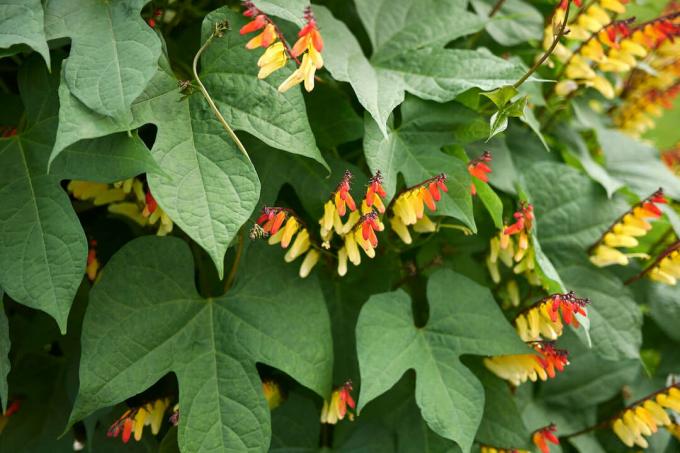
The Ipomoea lobata between March and April with preculture under a glass or in a cold frame. Alternatively, you can grow them on the windowsill in a sunny spot. It is best to soak the seeds in lukewarm water overnight. For the cultivation you need a substrate that is as low in nutrients as possible. For example, our is suitable for this Plantura Organic Herb & Seed Soil, which is specially adapted to the rooting of seedlings. It contains valuable minerals and is peat-free. We recommend planting three to four seeds per pot and planting them at a depth of 0.5 cm. At a temperature of around 20 °C, germination occurs within two weeks. As soon as the Spanish flag germinates, the plants are pricked out in individual pots and supported with a stick to help them climb. The temperature can then be lowered to 12 to 15 °C.
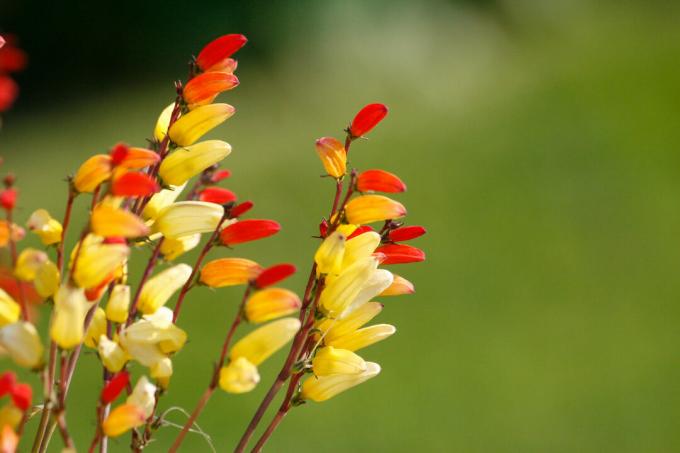
From the end of May, the Morning Glory can move outdoors. There it needs a humus-rich, well-drained soil. It is best to plant the young plant at a slight angle to a trellis. For example, vertical ropes or thin branches around which the plant can wind are ideal for climbing. If it is to serve as a privacy screen, several plants are planted at a distance of 80 cm and a trellis is used as a climbing aid.
You can also keep the morning glory in pots on the balcony or terrace without any problems. As it grows quickly, care must be taken to select a large clay or stone pot, 60-80cm in diameter, with drainage holes. You also need a compost-rich garden soil, such as ours Plantura organic compost. This is sustainably produced in Germany and contains only natural and valuable raw materials.
The right morning glory care
The Indian feather is a plant that needs little watering during the growth phase. It does not tolerate waterlogging. At the same time, the roots should never dry out completely. With very high daytime temperatures in midsummer, the plant needs a lot of water and may have to be watered twice a day.
Tip: If the trellis is too wide to be wrapped around or you want to steer the winch in a certain direction, you can loosely tie it to the climbing aid.
In order to be able to form many healthy umbelliferous flowers, the starry morning glory needs a lot of nutrients. When fertilizing, you should make sure to choose a fertilizer that has a high potassium content. Because potassium, together with phosphorus, promotes flowering. Here is ourPlantura organic flower & balcony fertilizer, which you should add to the irrigation water every two weeks. Our organic fertilizer quickly releases all the important nutrients to the plant and also ensures healthy soil life.
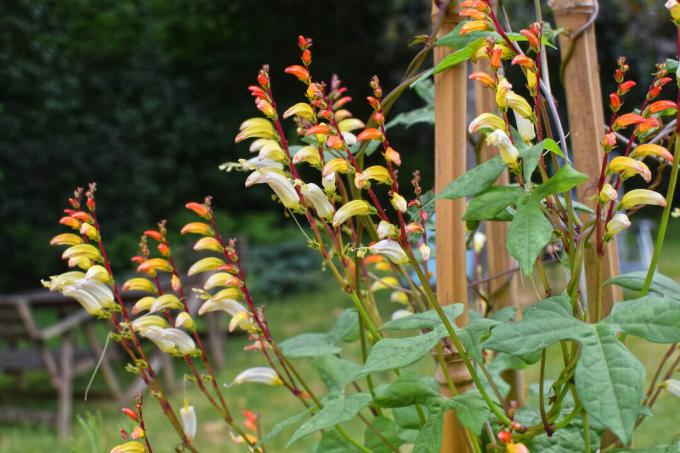
Star Morning Glory does not bloom: If your morning glory does not flower, this could be due to a too high nitrogen content in the substrate or a too shady and unprotected location. If the substrate is covered with leaves or weeds, these should be removed. It prevents air circulation in the floor. At best, use an organic material such as bark compost to cover the soil.
increase stellar winds
The morning glory is propagated by seeds or cuttings. The seeds usually have to be purchased from specialist retailers, since the flowers are pollinated by butterflies, but our weather conditions usually do not allow them to fully ripen. Therefore, the Morning Glory usually cannot form seeds. Instead, you can take cuttings from the mother plant. The soft cuttings are cut off with a sharp knife in the spring and placed in potting soil. The soil should now be kept sufficiently moist. A rather high level of humidity also promotes propagation success. Overwinter the cuttings in a bright and warm place in the apartment. The plants can then be placed outside next spring.
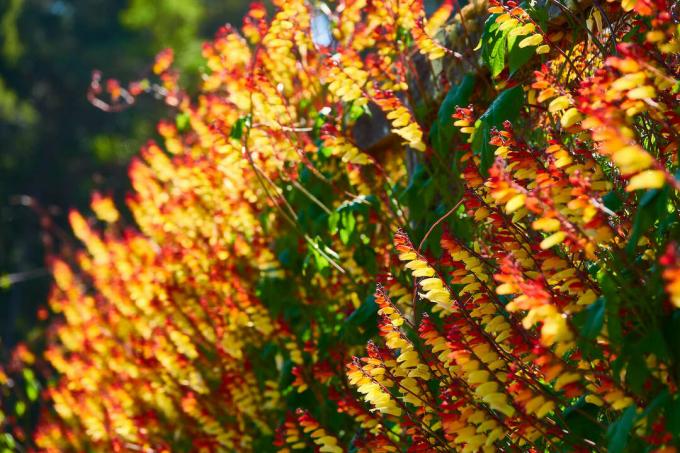
Is the stellate morning glory hardy?
Unfortunately, the morning glory is not hardy, but very sensitive to frost and is therefore often only cultivated as an annual. You can also overwinter the morning glory in the apartment and thus cultivate it for several years. Find a bright place with temperatures between 10 and 15 °C. During the winter break, the star bindweed should not be fertilized and should only be watered a little. Regular airing is good for the stellate wind at this time.
Is the stellar morning glory poisonous?
Like almost all morning glory plants, the morning glory is poisonous and can be dangerous for both pets and children if eaten. However, skin contact is usually harmless.
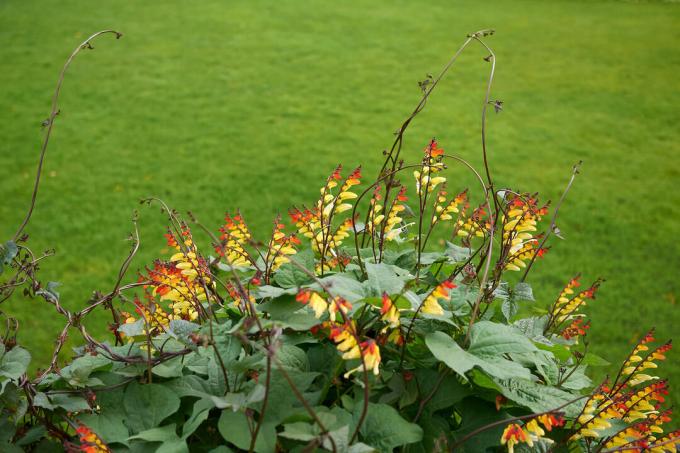
The sweet potato is also a morning glory plant. It not only tastes good, but is also very decorative. We give 10 sweet potato tips and tricks, from cultivation to harvest.
